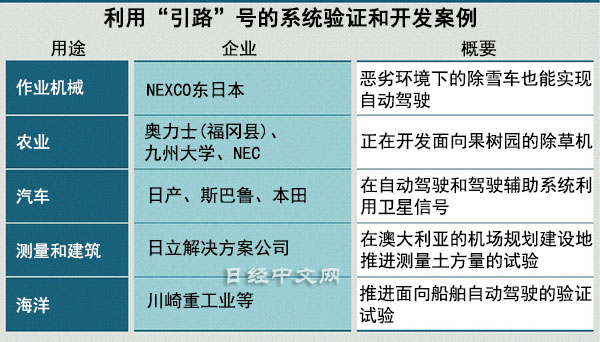
6-8 #What’sLife : TSMC will spend NTD1T to expand the production capacity of the 2nm process in Taichung; Google reportedly work with Samsung again on the 2nd-genTensor chipset; TCL CSOT has announced its two new curved screen technologies; etc.

In 2019, Asurion published a study indicating that US residents checked their smartphones an average of 96 times per day, or about once every ten minutes (when accounting for eight hours of sleep). The company has recently done a follow-up study and found that the number increased nearly 4-fold to 352 times a day. That would mean the average American checks their phone about once every three minutes. The survey was conducted between 2-9 Mar 2022 and involved almost 2,000 US adults of various ages. According to Asurion, three-quarters of respondents consider their phone a necessity rather than a luxury, and 20 percent of them are unwilling to go without it for more than a few hours. Another 75% of people even admitted that they take their phones into the bathroom with them. 75% of Baby Boomers and 76% of Generation Xers consider their phones to be a necessity. That’s slightly higher than the more-techie Gen Zers (71%) and Millenials (68%). (CN Beta, Techspot, Asurion, PR Newswire)
HMD Global will reportedly launch a collection of Nokia 5G smartphones in 2H22, which are powered by Qualcomm Snapdragon 480 5G. Those include Nokia XR21, Nokia X21, Nokia X11 and Nokia G11 Plus. (Android Headlines, Nokia Poweruser)
Intelligent Terminal Golden Seal Alliance (ITGSA), an alliance formed by Alibaba, Baidu, OPPO, Tencent, vivo, and Xiaomi, has announced that it will push to drop support for 32-bit apps. ITGSA is ready to phase out 32-bit APPs and fully promote 64-bit. ITGSA has stated that the ARM architecture is gradually restricting the operation of 32-bit applications. In some platforms that have been listed, 32-bit applications only support running small cores, resulting in obvious experience problems in performance and power consumption of pure 32-bit applications. It is expected that by the end of 2023, the IP architecture of ARM in the listed flagship machines will only support 64-bit applications, bringing users up to 20% potential performance improvement. (CN Beta, TechNode, Weibo)
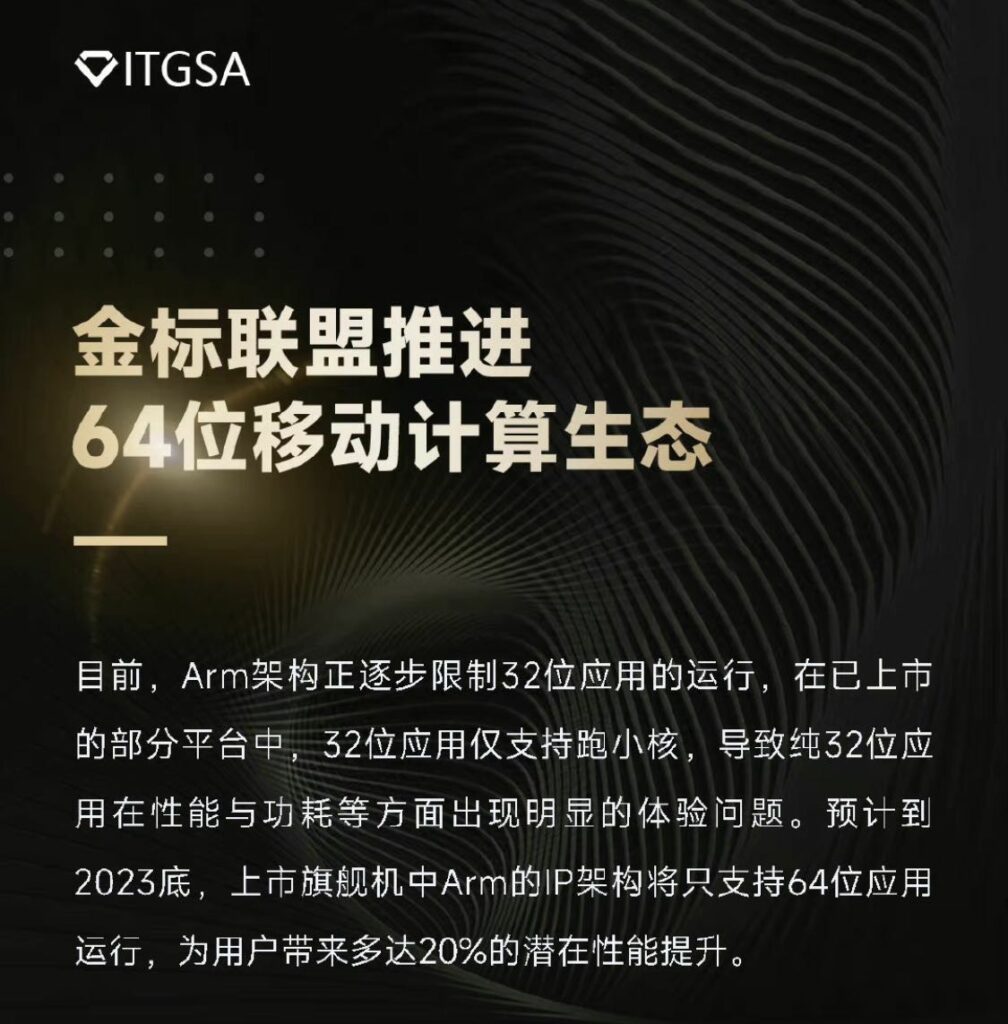
Xiaomi has announced an organizational adjustment. The Xiaomi product department and the Redmi product department merged to form the mobile phone product department, with Ling Xiaobing serving as the general manager of the mobile phone product department. It is reported that the mobile phone product department consists of Xiaomi product department, Redmi product department, and Pad product department. Shi Shasha serves as the head of Xiaomi product department of the mobile phone product department; Guo Ruimin serves as the head of the Pad product department of the mobile phone product department; Ling Xiaobing concurrently serves as the head of the Redmi product department.(CN Beta, Sina, My Drivers)
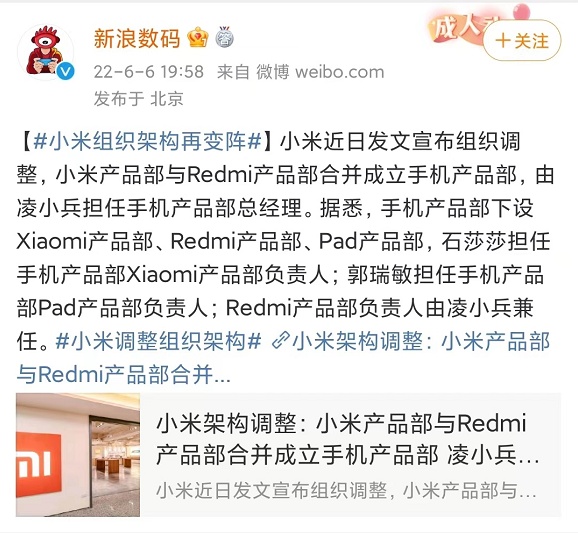
Apple has introduced the new upgrade for iPhones. iOS 16, the next major upgrade to iOS will come with new features, improvements and more. The company introduces its biggest ever update for the lock screen on iPhones and iPads. The new lock screen will allow users to customize the way the date and time portions look like. The new Focus feature allows the user to choose desired focus straight from the lock screen and change which apps can show notifications. iOS 16 also introduces three new features for the Messages. Users can now edit a message, and even unsend a message (Apple gave it a fancy Undo Send name). Users can mark conversations as unread. There is a new Dictation mode with a few minutes of air time. It no longer needs a data connection, and a completely on-device. Users can also switch between dictating and typing with the keyboard. There are automated emoji recognition, auto-punctuation, and full Siri support.(GizChina, Neowin, Apple, Apple)
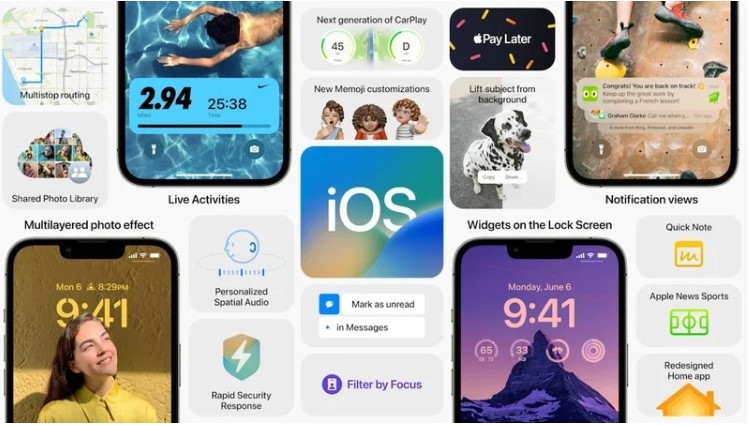

Apple has officially announced iPadOS 16, the latest version of its iPad operating system launching later in 2022. New iPad features include Collaboration, where you can add folks to collaborate in real-time via first and third-party video apps. A new Freeform feature in iPadOS 16 allows others to jot down notes or draw on a virtual whiteboard, while Stage Manager makes it easier to work with a connected external display. These new features seem promising and may deliver on the notion of turning the iPad into a desktop replacement.(Phone Arena, Apple, The Verge)
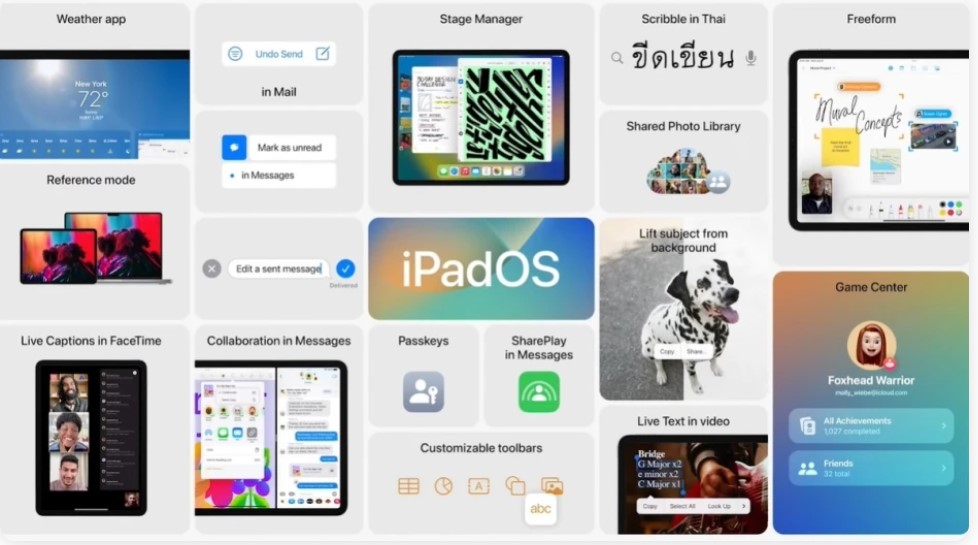
Apple has revealed that the next edition of the Mac operating system is to be called macOS Ventura, and amongst many new or improved features, its notable additions include Stage Manager, which helps when coping with many open windows. The existing Continuity Camera feature lets a Mac control an iPhone to scan documents. Now it is being extended to let Mac use an iPhone as a webcam. The new macOS Ventura adds Stage Manager, a way of handling multiple windows across many apps that are open at the same time. When a user brings forward a second app, the first “gracefully moves over to the left” of the screen with other recent apps. Apple is introducing new security tools including Rapid Security Response. This “works in between normal updates to easily keep security up to date without a reboot”.(Apple Insider, Apple, Wired, MacWorld)
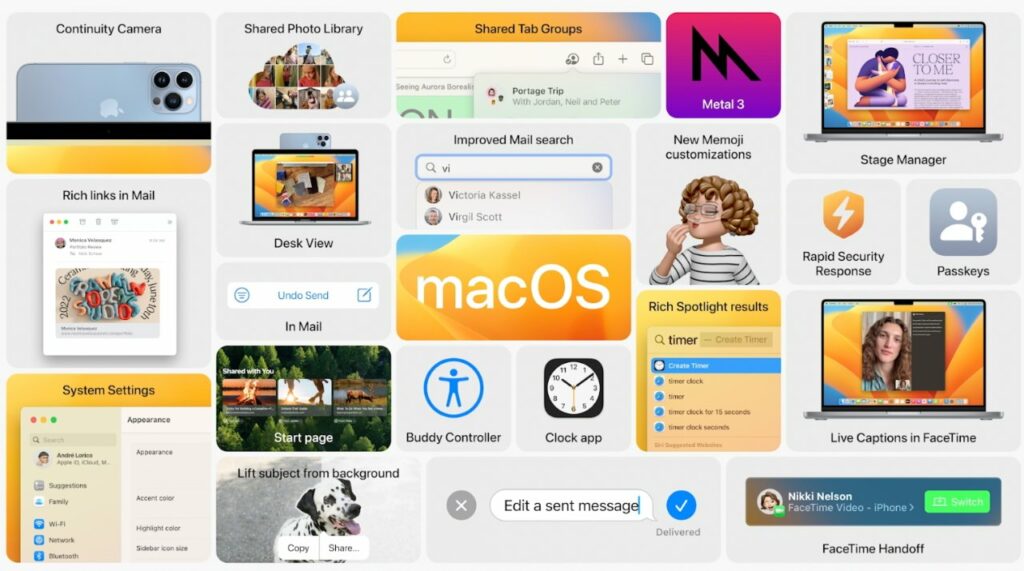

Global TWS (true wireless stereo) shipments grew 17% in 1Q22 to reach 68.2M units, according to the latest Canalys data. Apple, Samsung and Xiaomi retained their top 3 positions from the previous quarter, but only Apple grew shipments. Among the top 5 TWS vendors, Skullcandy and Edifier, both audio players, gained market share while the top three lost it. Since 3Q21, TWS remains the only growing category, leading to the overall 4% growth in the worldwide smart personal audio market. Market leader Apple’s TWS shipments were up 14%. Apple’s AirPods line grew 3% to reach 19.3M units, while Beats by Dre, Apple’s audio sub-brand, contributed more significant growth, increasing 553% to reach 2.4M units. (Canalys, CN Beta)
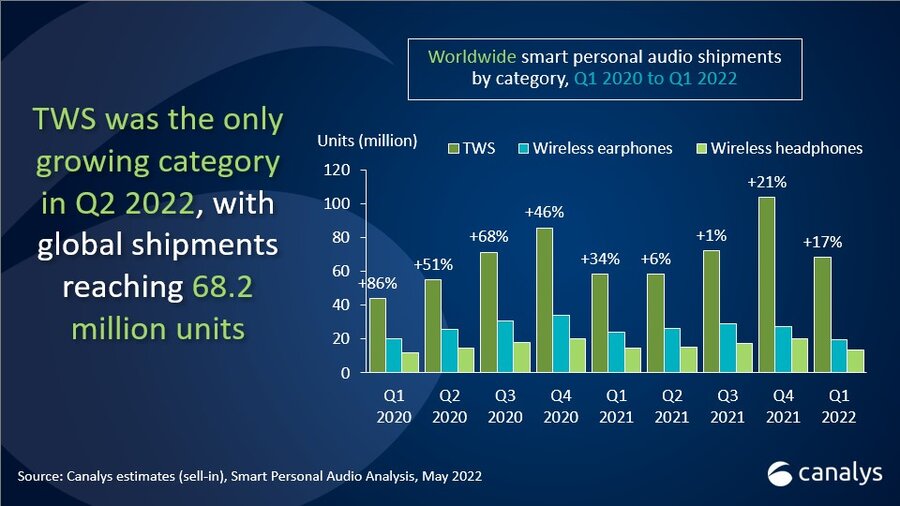
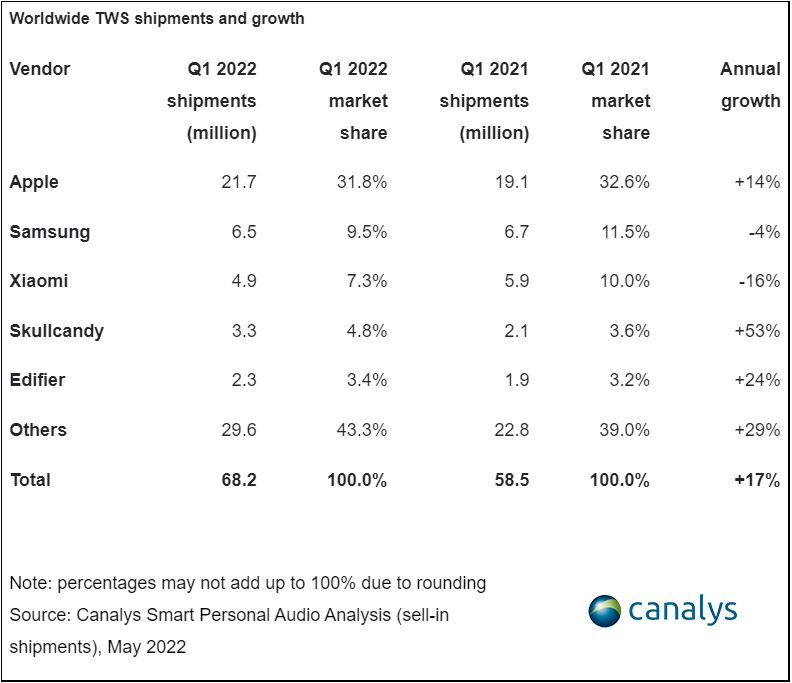
Apple has debuted WatchOS 9, a major update coming to the Apple Watch. Improvements to the watch faces, Workout app, sleep phases, a first-of-its-kind AFib History, and medication monitoring are all part of the latest version. More information and metrics are now displayed in the Workout app. Custom workouts allow you to design an organized program with customized work and rest periods. New notifications may be added, such as pace, power, heart rate, and cadence. The Exercise app now has a new Multisport workout option for triathletes that automatically transitions between any sequence of swimming, bike, and running sessions based on movement patterns seen by the motion sensors.(Pocket-Lint, GizChina, Apple)
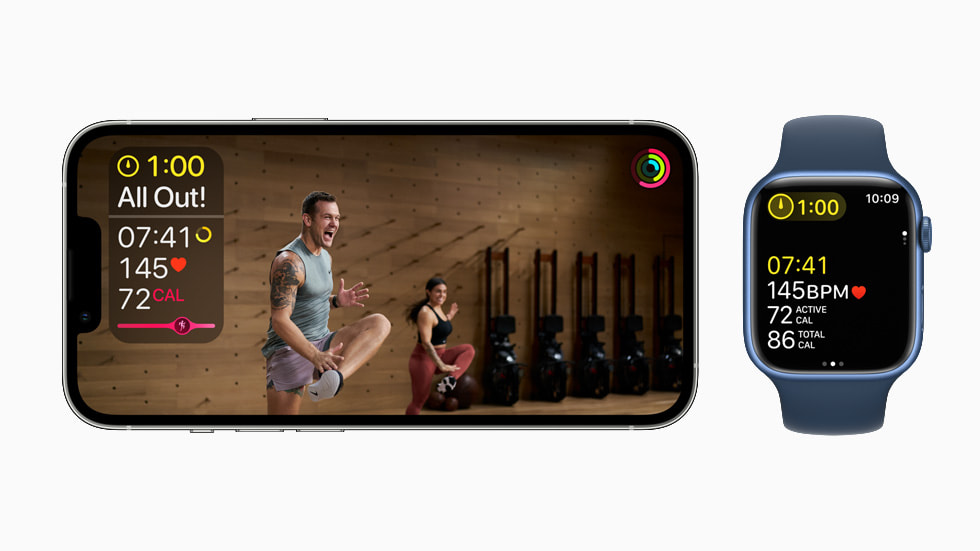

Square Enix has said that money raised from the sale of a large part of its western development arm will not be reinvested in NFTs and blockchain. Gearbox owner Embracer announced on May 2 that it is to acquire Crystal Dynamics, Eidos Montreal, Square Enix Montreal and a catalogue of IPs including Tomb Raider, Deus Ex, Thief and Legacy of Kain for USD300M. Square Enix said at the time that “the transaction enables the launch of new businesses by moving forward with investments in fields including blockchain, AI, and the cloud”.(CN Beta, VGC, WCCFTech, Square-Enix)
TF International analyst Ming-Chi Kuo has said that Apple’s AR/MR headset release is expected to be delayed until 2Q23 due to the interruption of R&D progress. He predicts that Apple’s AR/MR headset will start engineering verification in 3Q22; a media campaign will be held in Jan 2023, and the development kit will be delivered within 2-4 weeks after the event; pre-orders will begin in 2Q23. (Gizmo China, My Drivers, GSM Arena, Twitter)
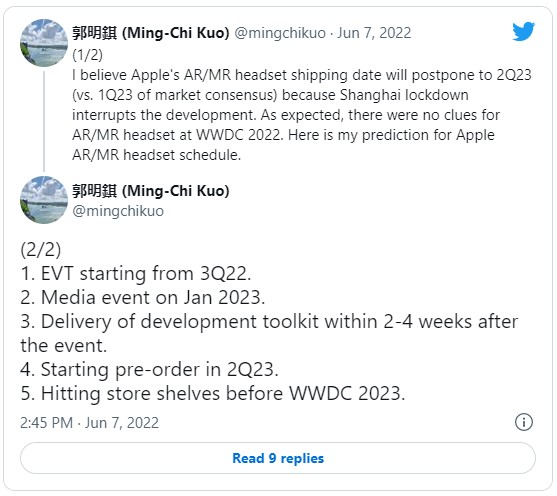
TF International analyst Ming-Chi Kuo has made a new round of predictions for the release of Sony’s Playstation (PS) VR2. He believes that Sony has completed the hardware development of PS VR2, and the hardware supply chain can start mass production in 3Q22. But whether Sony will release PS VR2 in 2022 is a tough question to decide. According to Ming-Chi Kuo’s analysis, if Sony insists on releasing PS VR2 with a strong lineup of 20+ games, Sony may miss the peak season due to the long time period; if it does not insist on releasing PS VR2 with an eye-catching game lineup, it will definitely be available in 2022 , but may result in lower-than-expected shipments. (CN Beta, VR Times, Twitter)
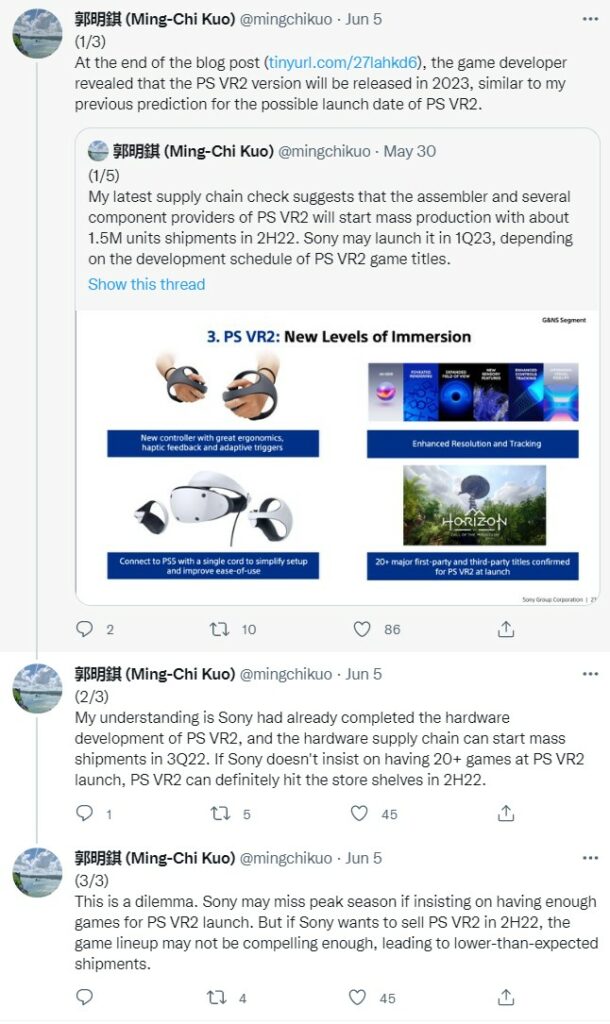

Tesla CEO Elon Musk has said that the electric car maker is going to reduce its staff strength by 10% and also he had a super bad feeling about the world economy.(CN Beta, NY Times, CBS News, Business Insider, Live Mint)
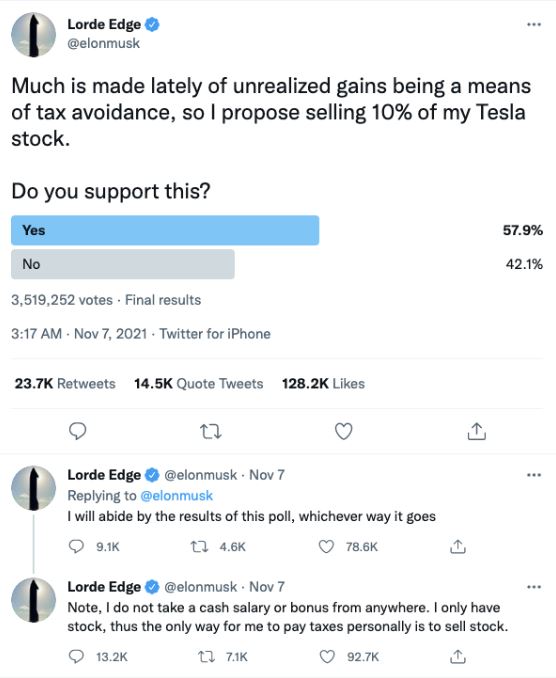
Sony Chairman, President and CEO Kenichiro Yoshida has said the company’s planned joint venture with Honda Motor may hold a public share offering as the two companies prepare to develop electric vehicles together. Sony and Honda plan to form a joint venture by the end of 2022 with the aim of marketing their first EVs in 2025. Sony will develop the software and entertainment content, such as movies and music, available in the car, while Honda will provide the hardware and safety features for the vehicle itself.(Engadget, Asia Nikkei)
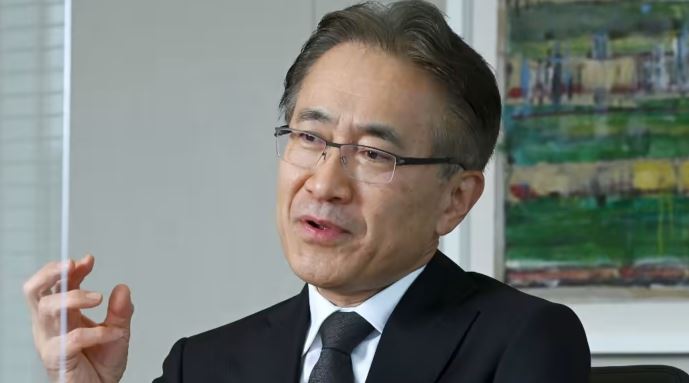
SkyDrive has announced a partnership with Suzuki to develop an all-electric eVTOL, or electric vertical take-off and landing vehicle. SkyDrive said the two-seat vehicle, currently called the SD-05, will carry one pilot and one passenger. SkyDrive started getting attention when it debuted its prototype eVTOL, the SD-03, in Aug 2020. In a public demonstration, the piloted vehicle flew roughly 6 feet above the ground and hovered for about 4 minutes. In Apr 2022, SkyDrive announced it had reached an reached an agreement with Japanese transportation regulators on the basis for certification of a flying car. (CN Beta, CNET)
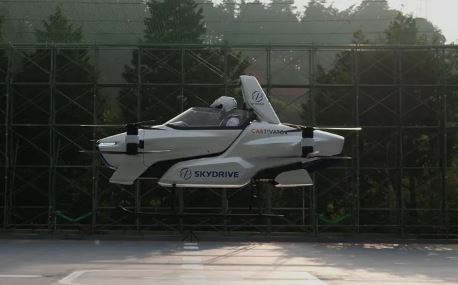
Volocopter透露,其四座电动VTOL飞机VoloConnect在2022年5月完成了首次飞行。这台载具的最初测试行程很短,只有2分14秒,但这些操作证明了能够实际投入载客运营的无人驾驶交通工具的空气动力学和性能在真实世界的条件下是可行的。VoloConnect预计将于2026年开始为客户提供服务,比VoloCity预计的2024年推出的时间晚两年。(CN Beta, Engadget, EVTOL, New Atlas, PR Newswire)
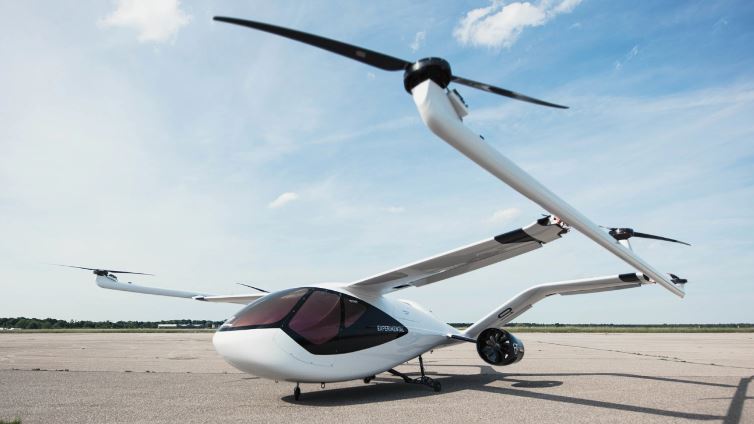

Uber Eats, the food delivery arm of Uber, is launching nationwide shipping, a new product that will allow customers across the U.S., excluding Alaska and Hawaii, to get specialty food delivered from select merchants in New York City, Miami and Los Angeles. Uber’s delivery spinout, Uber Freight, which connects shippers with carriers, will not be a part of this new product. Instead, nationwide shipping will be made possible via a partnership with FedEx, which will deliver foods within an average of 4-5 business days, according to Uber.(CN Beta, TechCrunch, Engadget)


Samsung Electronics has replaced the head of the Semiconductor R&D Center, which is leading the development of next-generation chips. At the same time, it has reshuffled key executives of the Foundry Business, which is competing with TSMC in the world foundry market. Samsung Electronics has appointed Song Jae-hyuk, vice president and head of the Flash Development Department, as the new head of the Semiconductor R&D Center. Song is credited with orchestrating a shift to vertical NAND flashes and the development of super-stacked NAND flashes. In the Foundry Business reshuffle, Nam Seok-woo, vice president of global manufacturing & infrastructure in the Semiconductor Business of the Device Solutions (DS) Division, will double as the head of the Foundry Manufacturing Technology Center. Nam is one of Samsung Electronics’ best memory semiconductor process development experts.(CN Beta, Toutiao, Business Korea)
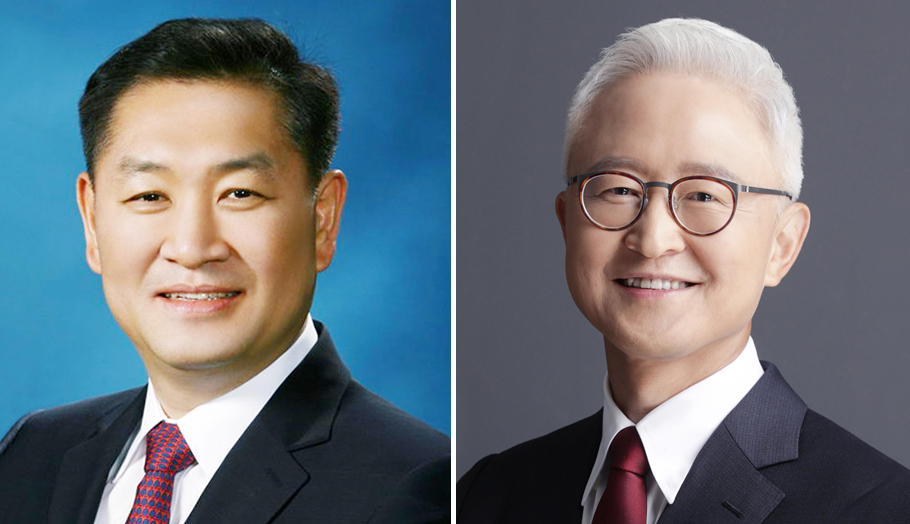
TSMC will spend NTD1T to expand the production capacity of the 2nm process in Taichung, and has already proposed to the local regulatory authority the need for land to set up a factory. According to the plan, Samsung will take one step ahead of TSMC to mass-produce the 3nm process in 1H22, while TSMC’s previously disclosed 3nm mass production time is 2H22. However, TF Securities analyst Ming-Chi Kuo has recently indicatd that TSMC’s 3nm and 4nm modified versions will not be able to achieve mass production until 2023, which will lead to Apple’s new iPhone in 2023 only using the 5nm modified version and 4nm process. TSMC will enter 2nm R&D in 2021 and plans to start mass production in 2025.(CN Beta, UDN, Yahoo, NTDTV)

Loongson plans to formally introduce and start shipping its 3C5000 processors based on its own LoongArch instruction set architecture and featuring up to 16 cores. Loongson’s LS3C5000 processors feature up to 16 LA464 cores, up to 32MB of cache, and four 64-bit DDR4-3200 memory interfaces with ECC support, according to eZone.hk. Each of Loongson’s LA464 cores have four general-purpose ALUs, and two 256-bit vector operations units. Also, being LoongArch-based, they feature 2,000 proprietary instructions, binary conversion extension instructions (LBT), vector processing extension instructions (LSX), advanced vector processing extension instructions (LASX), and virtualization extension instructions (LVZ). The CPU is reportedly made using SMIC’s 12nm fabrication process, an enhanced version of its 14nm manufacturing technology.(CN Beta, Loongson, EXPreview, Tom’s Hardware)
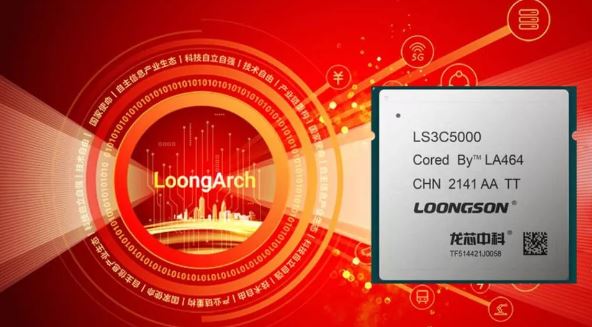
Google reportedly work with Samsung again on the second-generation Tensor chipset, which will be produced by Samsung Foundry using its 4nm process node. The 4nm LPE process node has been used by the foundry to build Samsung Exynos 2200 and Qualcomm Snapdragon 8 Gen 1. The second-generation Tensor chip should come with an upgrade to the chip’s Tensor Processing Unit (TPU) which combines the chip’s AI capabilities with its audio and image processing. (CN Beta, Android Authority, Phone Arena)
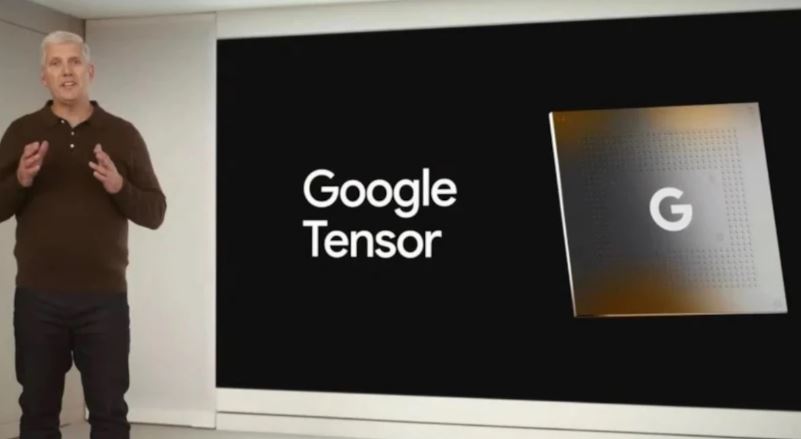
Apple has unveiled the successor to its M1 processor, M2. The new chip is built on the 5nm process and brings an 18% CPU boost over the M1, a 35% increase in GPU performance, and a 40% faster Neural Engine. It also brings 50% more memory bandwidth compared to the M1 and supports 24 GB of unified memory. Aside from the power usage reductions that M2 delivers, Apple says that every chip that it makes, from design to construction, will be 100% carbon neutral.(Neowin, GizChina, Apple)
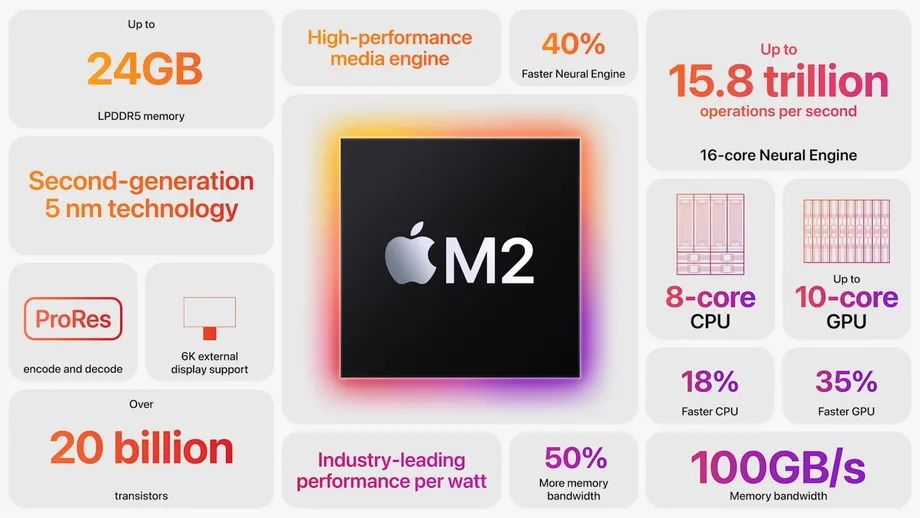

TCL CSOT has announced its two new curved screen technologies, which include waterfall screen hyperbolic technology and equal-gauss four-curved surface technology. In the Waterfall Screen Hyperbolic Technology, the curved screen with a certain curvature mainly realizes the screen bending through the OLED panel. It is increased to nearly 90-degree to form a waterfall-like bend. The company adds that the bilateral curvature of the screen can reach 88º. Also, unlike the conventional 60-degree hyperbolic screen, the side curvature of this one can reach nearly 90º. On the other hand, the four-curved technology is based on hyperboloid technology, which adds curved glass at the upper and lower ends on the basis of the curvature of the left and right screens of the hyperboloid screen. (Gizmo China, 163, iResearch, CN Beta, China Daily)
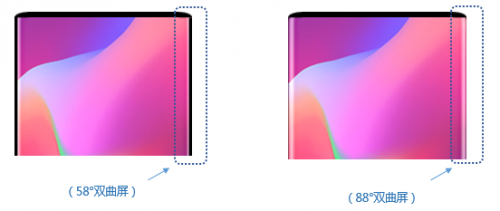
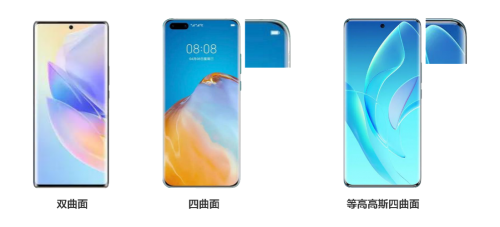
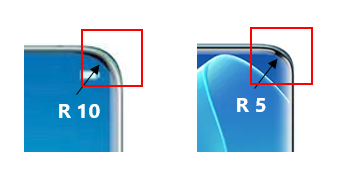
Samsung is reportedly planning a foldable phone that will be part of the Galaxy A series, which includes both mid-range and more affordable devices. Samsung’s plan to release a foldable phone that is part of the Galaxy A series seems to be in very early stages. Samsung’s mobile division, Roh Tae-moon, does not know when the company will start working on the project. Rhe expectation is that Samsung will release it either in 2024 or 2025. (Twitter, Neowin)
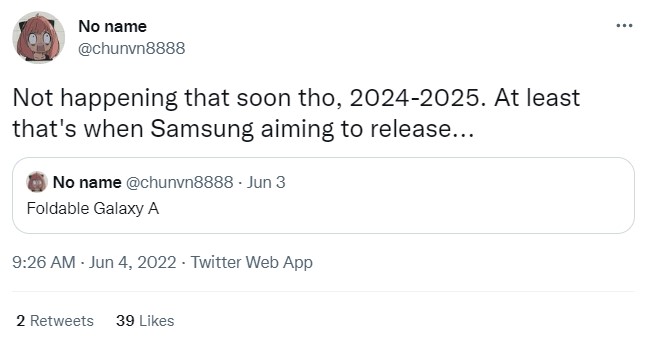

TF Securities analyst Ming-Chi Kuo has revealed that Foxconn, Galway and Wingtech are Apple’s existing iPhone front camera module suppliers. Wingtech has entered the supply chain after acquiring the O-Film factory. Wingtech was unable to get orders for the front camera of the iPhone 14 because it was too late to verify the new products after the acquisition of the O-Film factory, rather than having recently encountered quality problems. In addition, he has stated that Foxconn did not receive orders for iPhone 14 front camera modules, but received orders for higher-end / higher ASP rear wide-angle lens modules for iPhone 14. So overall, Foxconn is one of the winners among iPhone 14 camera module makers. (CN Beta, Twitter, TechNews, iPhoneWired)
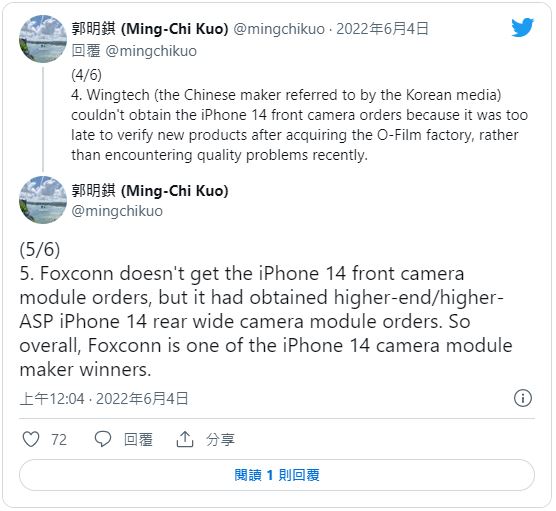

Samsung is reportedly expanding the use of batteries manufactured by LG Energy Solution (LGES) in its smartphones. The company plans to equip both budget and premium Galaxy smartphones with power units from LGES. All this while, Samsung’s low-cost Galaxy A and Galaxy M series smartphones always featured batteries from Samsung SDI or third-party suppliers such as Amperex Technology Limited (ATL), BYD, and Navitasis. Samsung is now looking to add LG to the list to further diversify the supply chain and increase price competitiveness. LG will manufacture batteries for Samsung smartphones at its Nanjing plant in China. The power units will then be transferred to Vietnam, where ITM Semiconductor will assemble protection circuits and pack them. ITM Semiconductor is responsible for packaging batteries for Samsung’s Galaxy A and Galaxy M series smartphones. (Android Headlines, The Elec)
vivo is reportedly working on a 200W charger. The standard will be implemented in iQOO 10 Pro that could arrive by the end of 2022. The V2001L0B0-CN adapter provides 20V at 10A charge and also will be able to provide wireless chargers with 20V at 3.25A rates, which translates to 65W. The current iQOO 9 Pro flagship does 120W fast charging over the wire and 50W wirelessly. (GSM Arena, Weibo, MyFixGuide, Sina, EET China)
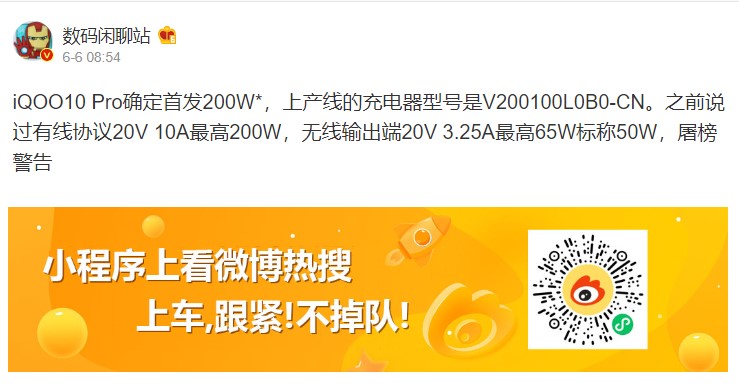
Solid Power, a Colorado-based battery start-up backed by BMW and Ford Motor, has said it has begun pilot production of an innovative solid-state battery cell that promises to offer electric-vehicle owners more range and shorter recharging times at lower cost. Solid-state batteries are so called because they do away with the liquid or gel electrolyte found in current lithium-ion batteries. In electric vehicles, they have the potential to offer more range, shorter recharging times and a lower risk of fires than lithium-ion batteries — all compelling g benefits that have drawn big investments from automakers over the last several years. Solid Power’s effort is one of several underway that aims to bring solid-state battery cells to market for use in electric vehicles. Its rivals range from public companies such as QuantumScape to private efforts funded by giants such as Toyota. (CN Beta, CNBC, Electrive)
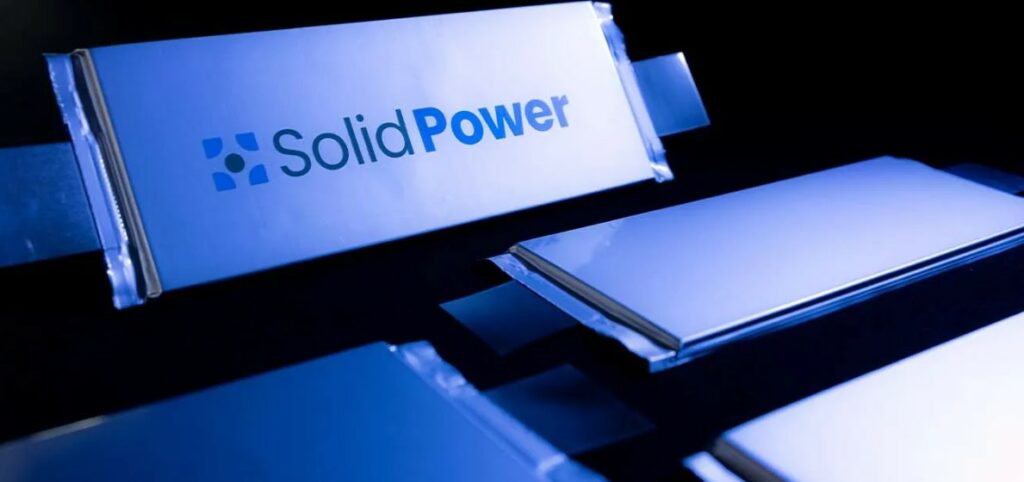

Sony Group has announced that its American subsidiary has formed a new company, Sony Space Communications (SSC) to develop small optical communications devices for satellites. SSC aims to connect micro satellites in low Earth orbit through laser beams. Optical communications enable high-speed communications with small devices without large antennae or high power output. The company plans to connect satellites with ground stations and also satellites in orbit with each other to enable real-time communications. This means a continuous service from anywhere on the ground to any satellite in space. Optical communications do not require frequency licenses and so are easier to implement than radio communications. SSC plans to apply its optical disc technology to create satellite communication devices that are ultra-compact, lightweight, mass-producible and able to withstand harsh conditions in space. (CN Beta, Space Watch, Sony, Space News)
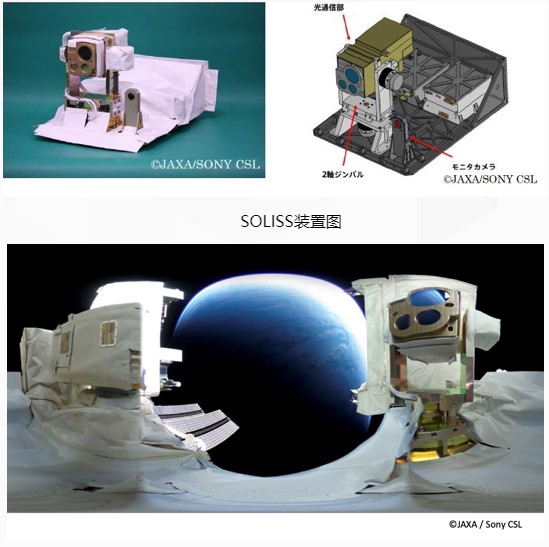
European Union lawmakers have reached an agreement on legislation that will force all future smartphones sold in the EU — including Apple’s iPhone — to be equipped with the universal USB-C port for wired charging by fall 2024. The rule will also apply to other electronic devices including tablets, digital cameras, headphones, handheld video game consoles, and e-readers. Laptops will have to comply with the rule later. The introduction of a “common charger” is an attempt by the EU to both cut down on e-waste and make life easier for consumers. Lawmakers hope that, in the future, phones and similar gadgets won’t need to come with a charger in the box, as buyers will already have the appropriate accessories at home. The EU estimates that the legislation could save consumers EUR250M per year on “unnecessary charger purchases” and cut down on around 11,000 tonnes of e-waste annually. (My Drivers, Twitter, Europa, 9to5Mac, MacWorld)
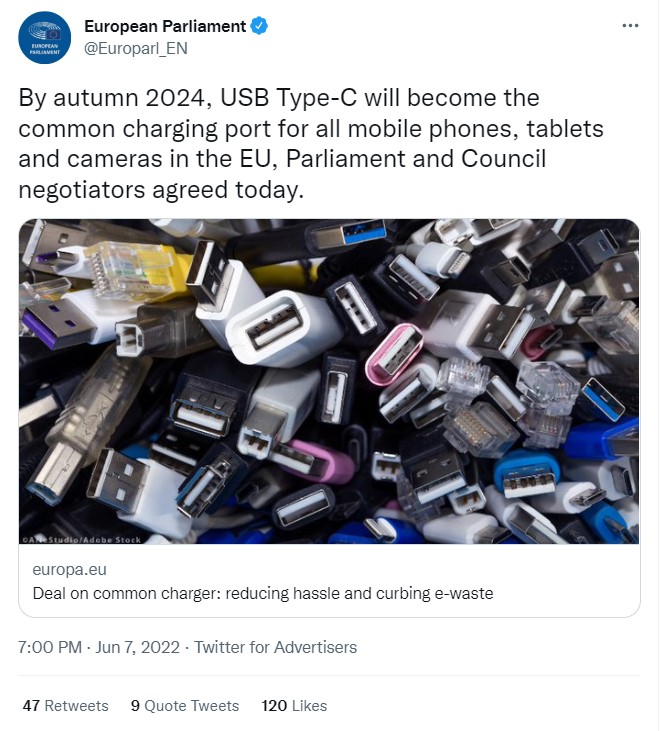
The East Japan Expressway Corporation (NEXCO East Japan) has said it will use the technology of the quasi-zenith satellite “Guidance” to realize the autonomous driving of snow removal vehicles in 2023. The quasi-zenith satellite “Guidance” is known as the Japanese version of GPS. At present, many Japanese companies hope to use this technology to achieve autonomous driving. If the “Guidance” number is used, the minimum positioning error is only a few centimeters. The snow removal vehicle can achieve a driving error of less than 20cm in snowy days without using a camera. It is reported that the first satellite was launched in 2010. It was developed by Mitsubishi Electric, and NEC also participated in the operation. In 2017, 3 satellites will be added, and the current 4 satellites will be operated by 2018. In order to provide more stable location information, the Japanese government plans to increase the number of satellites from the current 4 to 7 in 2023. Expected to be able to be used on its own without relying on US GPS. (My Drivers, Nikkei, iFeng)
